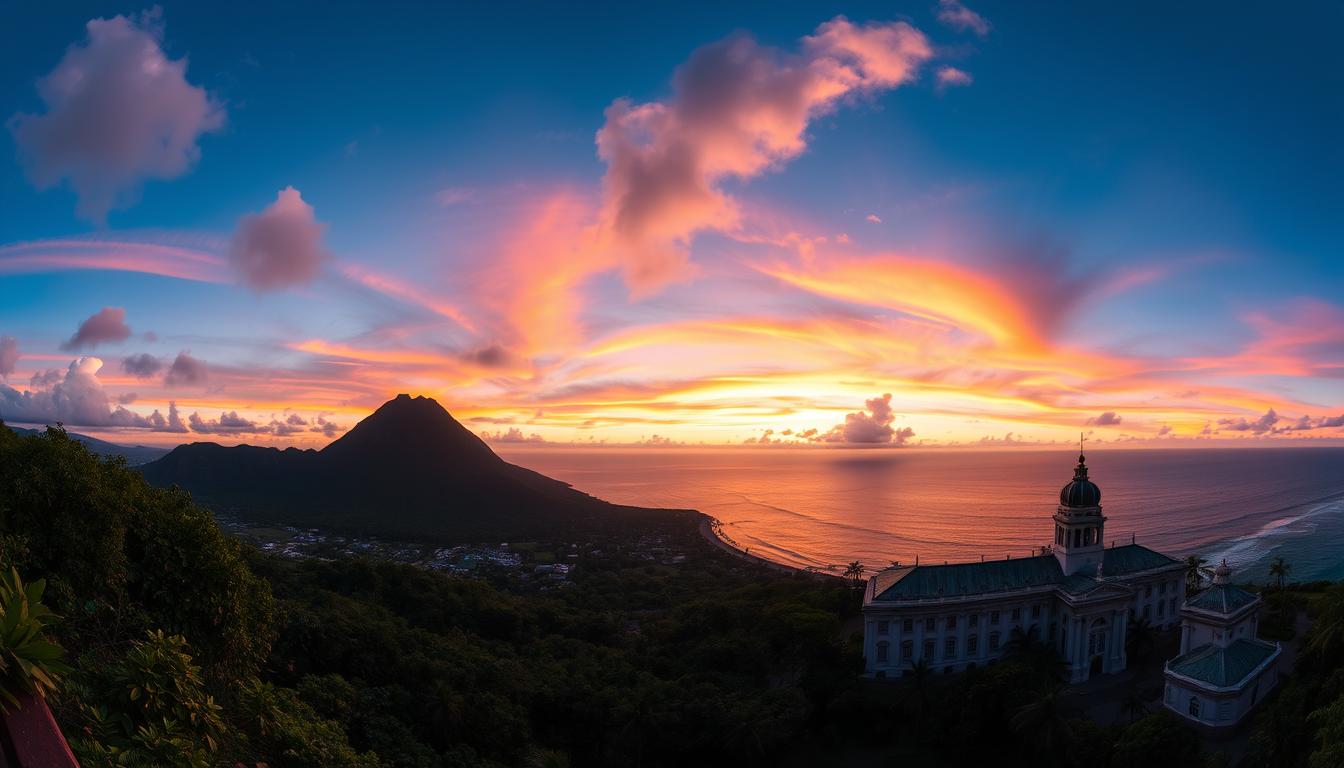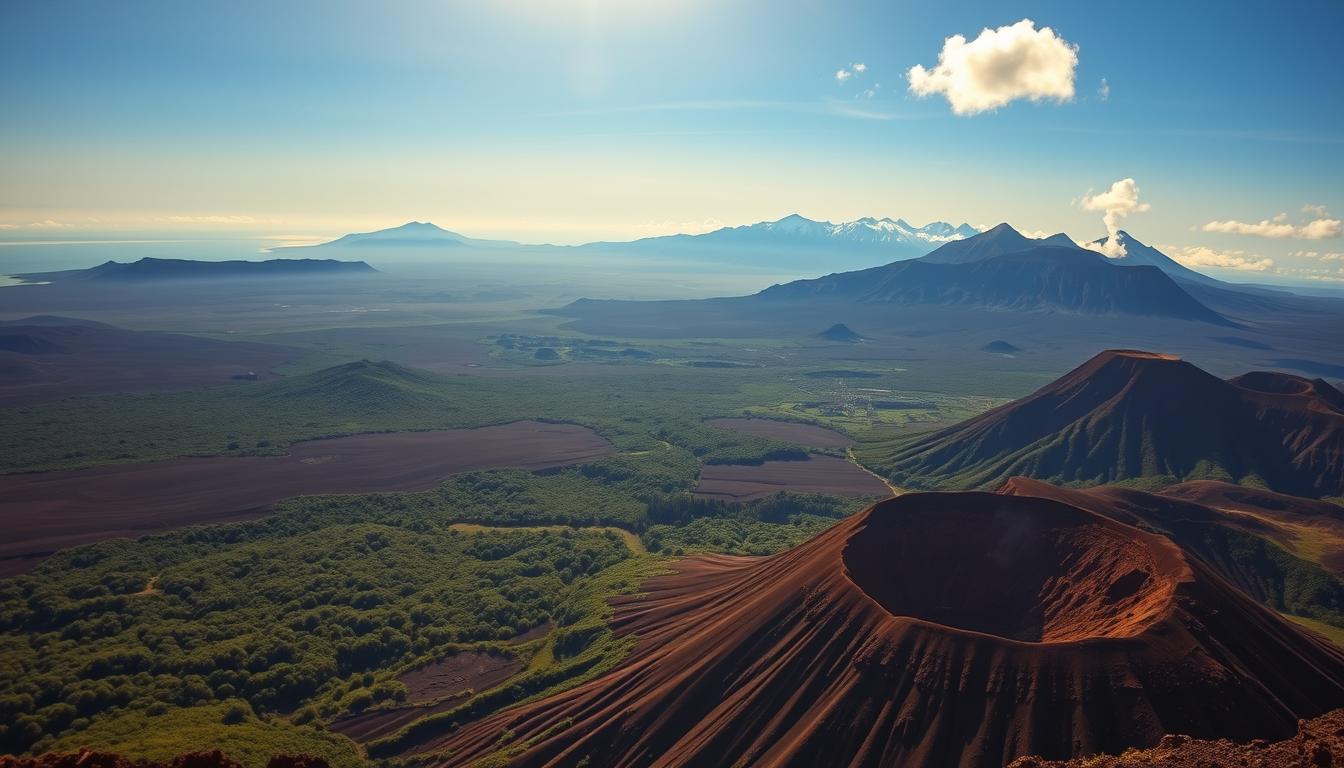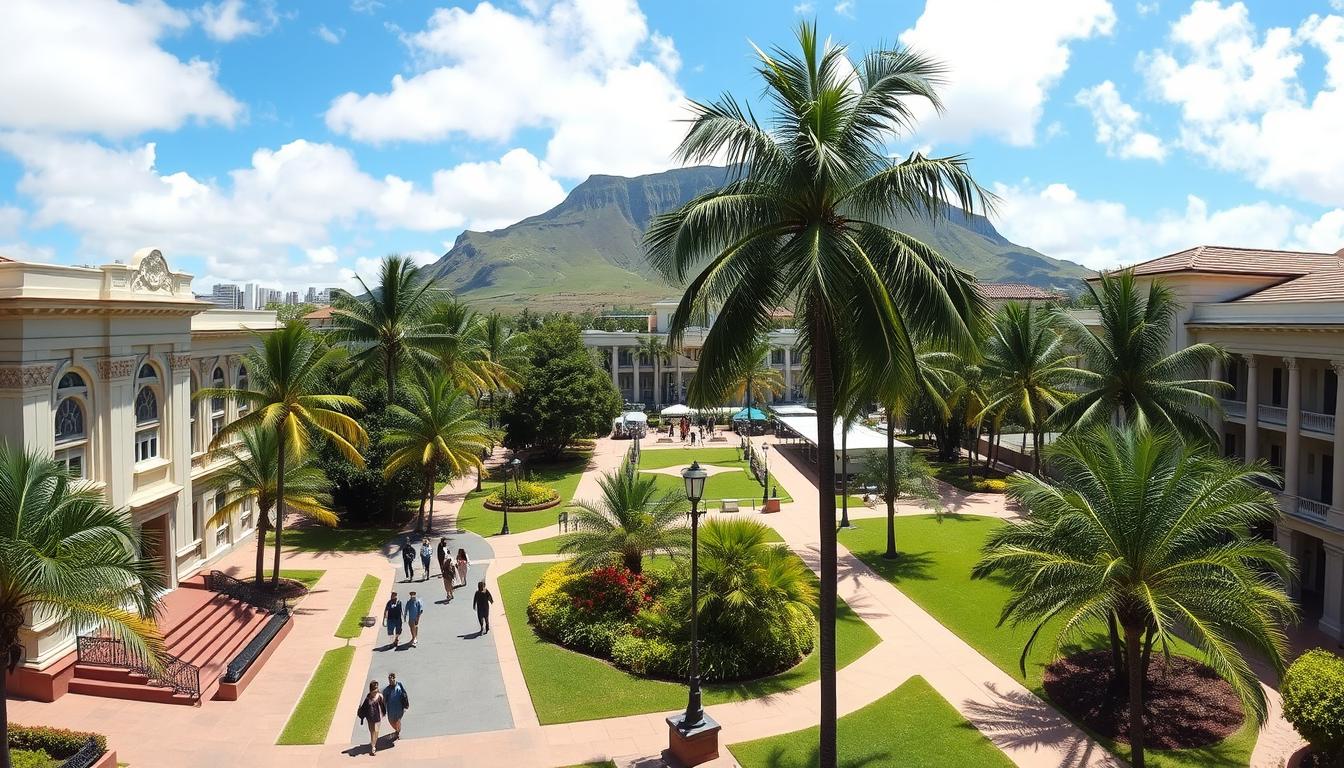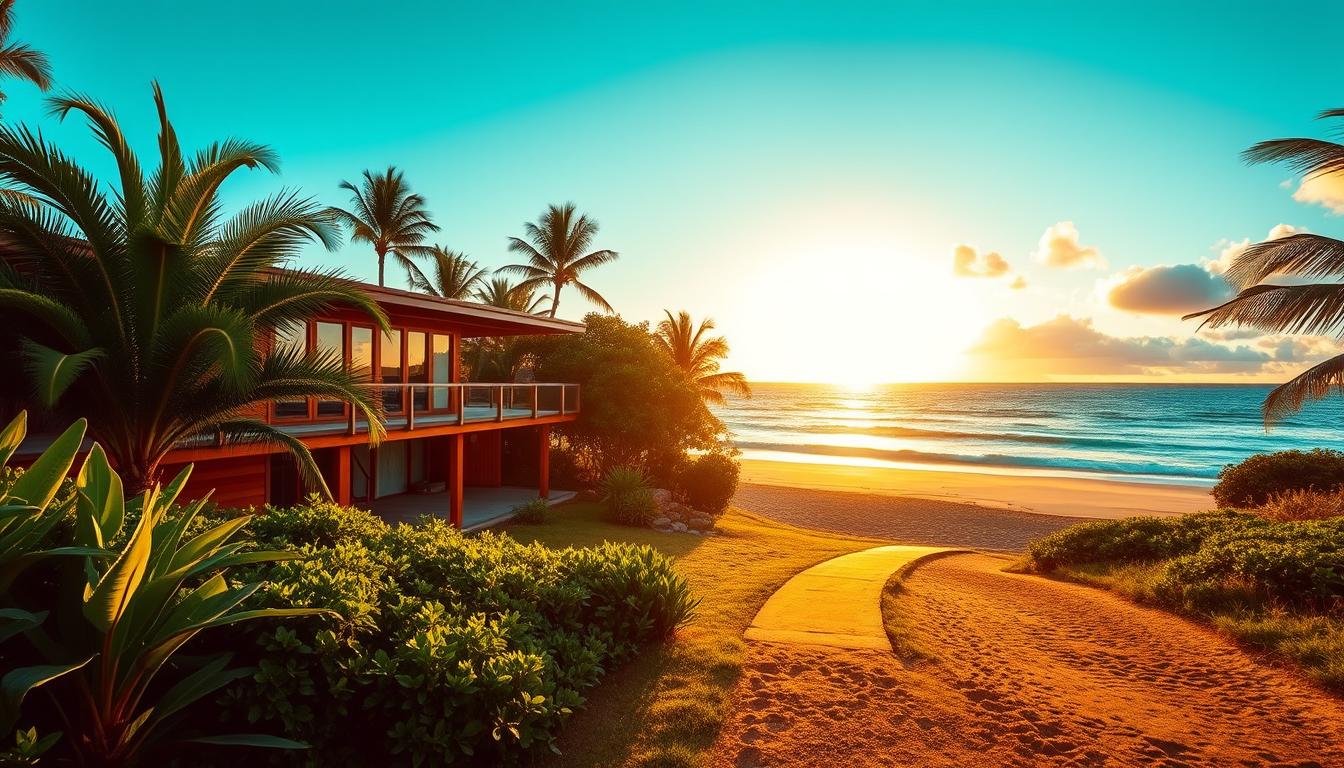Dive into the rich history of the Hawaiian Islands by exploring its most iconic landmarks and cultural treasures. From the sacred grounds of Pearl Harbor to the majestic Iolani Palace, Hawaii’s historic sites reveal the state’s storied past. This guide will take you on a journey through the Aloha State’s most significant historical landmarks, museums, and natural wonders. It aims to deepen your understanding of Hawaii’s legacy.
Key Takeaways
- Discover Hawaii’s 15 must-see landmarks spanning cultural, historical, and natural wonders
- Explore the iconic Pearl Harbor National Memorial and pay tribute to those who lost their lives in the 1941 attack
- Step inside the only royal palace in the United States at Iolani Palace in Honolulu
- Witness the stunning natural beauty of Waimea Canyon, known as the “Grand Canyon of the Pacific”
- Immerse yourself in the cultural heritage and traditions of the Polynesian Cultural Center
Preserving Hawaii’s Unique History
The Historic Hawaii Foundation, a statewide non-profit, has been working to save Hawaii’s historic buildings and sites for over 50 years. It aims to preserve historic places and raise awareness of Hawaii’s rich heritage. This mission is crucial for maintaining the state’s cultural identity.
Exploring Historic Properties in Hawaii
Travelers can delve into the Historic Hawaii Foundation’s online database of historic properties. Here, they can learn about each site’s history, location, and significance. This resource helps visitors discover and value Hawaii’s diverse historic landmarks. From ancient petroglyphs to iconic structures, there’s much to explore.
| Historic Property | Entrance Fee | Significance |
|---|---|---|
| Hulihe’e Palace | $10 for general admission, $8 for Hawaii residents | Formerly the vacation home of Hawaiian royalty, now a museum showcasing Hawaiian history and culture. |
| Pu’uhonua o Hōnaunau National Historical Park | $15 per car or $7 for individuals walking or biking in | This sacred place of refuge was a sanctuary for Hawaiians during the 16th century. |
| Lyman Museum and Mission House | $10 for adults, $8 for Hawaii residents | The museum houses a collection of artifacts and natural history exhibits, while the Mission House dates back to the 19th century. |
By exploring these historic properties, visitors can immerse themselves in Hawaii’s rich history. They gain a deeper appreciation for the islands’ cultural heritage.
Immersing in Hawaiian Culture and Tradition
Hawaii’s cultural heritage is a rich blend of indigenous traditions, foreign influences, and a profound respect for nature. Visitors can dive into this vibrant culture through various cultural events and activities. These experiences offer a glimpse into the living legacy of the Hawaiian people.
Cultural Events and Activities
The islands are filled with opportunities to experience Hawaiian culture. From mesmerizing hula performances to workshops in traditional arts and crafts, there’s something for everyone. Attend festivals like the Prince Lot Hula Festival and the Honolulu Festival to witness the diverse cultural heritage of Hawaii.
- Traditional Hula Performances: Witness the graceful movements and storytelling of hula, a cultural dance form that has been practiced in Hawaii for centuries.
- Hawaiian Music and Dance: Enjoy live music and dance performances that celebrate the rhythm and soul of the Hawaiian islands.
- Cultural Workshops: Participate in hands-on workshops to learn traditional Hawaiian arts and crafts, such as lei-making, lauhala weaving, and ukulele playing.
These cultural experiences offer a deeper understanding of the indigenous Hawaiian way of life. They also help preserve the islands’ rich heritage for future generations.
| Cultural Event | Description | Location |
|---|---|---|
| Prince Lot Hula Festival | Annual event showcasing traditional hula performances | Moanalua Gardens, Oahu |
| Honolulu Festival | Multicultural festival celebrating the diversity of Hawaii’s heritage | Honolulu, Oahu |
| Polynesian Cultural Center | Interactive theme park highlighting the cultural practices of various Polynesian regions | Laie, Oahu |
Hawaii historical landmarks
Hawaii is a treasure trove of historical landmarks that offer visitors a captivating glimpse into the islands’ storied past. From ancient petroglyphs etched into volcanic rock to towering statues honoring Hawaii’s most iconic figures, these landmarks showcase the ingenuity, artistry, and cultural significance of the Hawaiian people.
Uncovering the Mysteries of Hawaiian Petroglyphs
Scattered across the islands, ancient Hawaiian petroglyphs serve as a testament to the island’s rich history. These enigmatic carvings, found on lava rock formations, provide a window into the lives and beliefs of Hawaii’s earliest inhabitants. Visitors can explore sites like the Kaloko-Honokōhau National Historical Park on the Big Island, which showcases these remarkable artworks alongside ancient Hawaiian engineering marvels, such as fishponds and heiaus (temples).
Honoring Hawaiian Royalty: The Iconic Statues of King Kamehameha
No discussion of Hawaii’s historical landmarks would be complete without mentioning the imposing statues of King Kamehameha the Great. These towering bronze figures, found in various locations across the islands, commemorate the unification of the Hawaiian Kingdom under Kamehameha’s rule in the early 19th century. One of the most famous Kamehameha statues stands in Honolulu, serving as a symbol of Hawaii’s rich history and the enduring legacy of its most celebrated monarch.
| Hawaii Historical Landmark | Significance |
|---|---|
| ʻIolani Palace | The only royal palace in the United States, built in 1882 by King Kalākaua. |
| Pearl Harbor National Memorial | Commemorates the events of December 7, 1941, leading to America’s entry into World War II. |
| Puʻuhonua o Hōnaunau | A sanctuary for Hawaiians who broke sacred laws or sought refuge during wars. |
| Kaloko-Honokōhau National Historical Park | Showcases ancient Hawaiian engineering with fishponds and petroglyphs. |
These are just a few examples of the rich tapestry of Hawaii historical landmarks, from petroglyphs to iconic Kamehameha statues, that continue to captivate and educate visitors about the islands’ remarkable history.
Uncovering the Birthplace of King Kamehameha
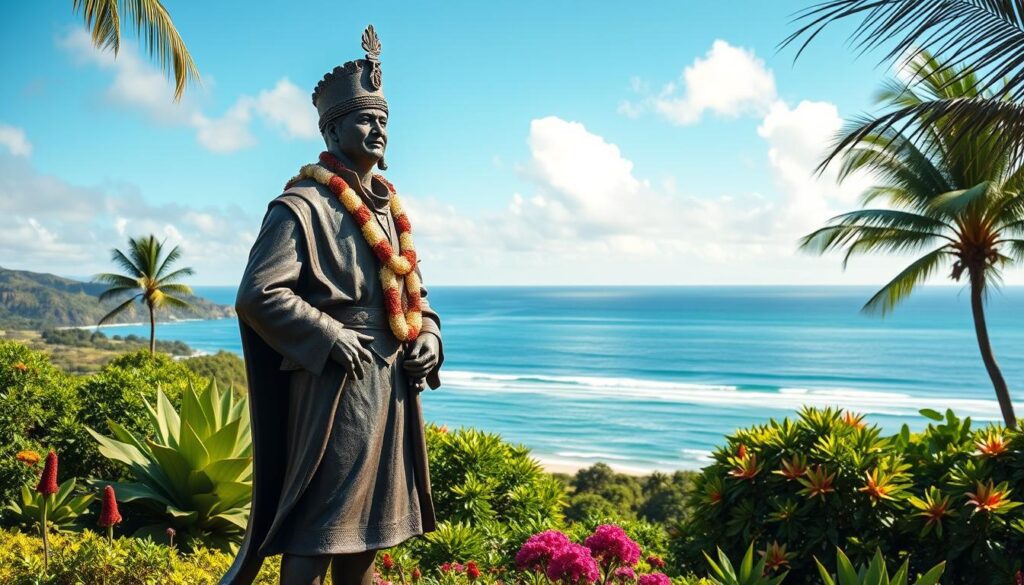
The Big Island of Hawaii, also known as the island of Hawaii, is where King Kamehameha the Great was born. This legendary ruler unified the Hawaiian archipelago under one kingdom. Visitors can explore sites and landmarks tied to Kamehameha’s life and legacy. They can dive into the rich history and cultural heritage of this remarkable figure.
The Kamehameha Rock in Kohala town is a significant site. It’s where the young Kamehameha showed his incredible physical strength. This landmark is a testament to the warrior king’s abilities and the reverence he holds in Hawaiian history.
The Pu’ukoholā Heiau is another must-see. Kamehameha had it built in 1790. This massive structure, measuring 224 feet by 100 feet, stands as the last major heiau in Hawaii. Visitors can explore and learn about its role in Kamehameha’s rise to power and the unification of the islands.
| Landmark | Details |
|---|---|
| Kamehameha Rock | Located in Kohala, where the young Kamehameha demonstrated his strength |
| Pu’ukoholā Heiau | A sacred temple built in 1790 on Kamehameha’s orders, measuring 224 x 100 feet with walls 16-20 feet high |
| Kapa’au | The birthplace of King Kamehameha I, offering visitors an authentic Hawaiian experience with outdoor activities, history, and the King Kamehameha Statue |
Kapa’au on the Big Island’s northern coast is a hidden gem. It’s celebrated as Kamehameha’s birthplace and is home to the impressive King Kamehameha Statue. Visitors can explore the Pololu Trail and Valley, hike to a black sand beach, and experience the rich history and natural beauty of this area.
Museums Showcasing Hawaii’s Legacy
Hawaii’s museums offer a captivating window into the islands’ rich history, diverse culture, and natural wonders. From the ‘Imiloa Astronomy Center’s exploration of the deep connection between Hawaiian culture and the night sky, to the Mokupāpapa Discovery Center’s focus on the state’s marine environments, these institutions provide visitors with a multifaceted understanding of Hawaii’s legacy.
‘Imiloa Astronomy Center
The ‘Imiloa Astronomy Center in Hilo is a must-visit destination for anyone interested in the intersection of Hawaiian culture and the cosmos. This state-of-the-art facility features interactive exhibits, a planetarium, and educational programs that delve into the ancient Polynesian wayfinding traditions and their relationship with the night sky.
Mokupāpapa Discovery Center
Situated in downtown Hilo, the Mokupāpapa Discovery Center is dedicated to showcasing Hawaii’s rich marine environments. Visitors can explore interactive displays and learn about the diverse array of marine life, as well as the importance of conservation efforts in these fragile ecosystems.
Pacific Tsunami Museum
The Pacific Tsunami Museum in Hilo provides a sobering, yet educational, look at Hawaii’s history with these devastating natural disasters. Featuring interactive exhibits and multimedia displays, the museum educates visitors about the science behind tsunamis, as well as the personal stories of those who have experienced them firsthand.
| Museum | Highlights | Annual Visitors |
|---|---|---|
| ‘Imiloa Astronomy Center | Explore the connection between Hawaiian culture and the night sky | Over 150,000 |
| Mokupāpapa Discovery Center | Discover Hawaii’s diverse marine environments and conservation efforts | Around 100,000 |
| Pacific Tsunami Museum | Learn about the science and history of tsunamis in Hawaii | Approximately 75,000 |
Historic Palaces and Royal Residences
Hawaii’s historic palaces and royal residences provide a fascinating look into the islands’ cultural heritage and the lives of its monarchs. The Iolani Palace in Honolulu and the Hulihe’e Palace in Kailua-Kona are prime examples. These landmarks beautifully showcase Hawaii’s royal past.
Hulihe’e Palace
Hulihe’e Palace is located in Kailua-Kona and was a vacation home for Hawaiian royalty. It’s a masterpiece of 19th-century Hawaiian architecture, listed on the National Register of Historic Places in 1973. Visitors can explore its grand interiors and learn about its history through guided tours.
Iolani Palace
Iolani Palace in Honolulu was the official residence of Hawaii’s last monarchs, King Kalakaua and Queen Lili’uokalani. Dedicated in 1882, it’s the only royal residence in the United States. The palace’s ornate furnishings and its history, including the 1893 overthrow, are awe-inspiring.
| Palace | Historic Designation | Opening Hours |
|---|---|---|
| Hulihe’e Palace | National Register of Historic Places (1973) | Open 7 days a week |
| Iolani Palace | National Historic Landmark (1962) | Tuesday-Saturday, 9 a.m. to 4 p.m. |
Visiting these Hawaiian royal residences is a unique chance to dive into the islands’ cultural and architectural heritage. Whether you’re admiring the opulent interiors or learning about past monarchs, these landmarks are essential for anyone interested in Hawaii’s history.
Exploring Ancient Hawaiian Archaeological Sites
Hawaii’s islands are a treasure trove of ancient archaeological sites. These sites offer deep insights into the islands’ pre-contact history and the vibrant cultural heritage of the native Hawaiian people. The Puako Petroglyph Archaeological Preserve and the Moʻokini Heiau stand out as particularly notable and well-preserved.
Puako Petroglyph Archaeological Preserve
Located along the Kohala Coast of the Big Island, the Puako Petroglyph Archaeological Preserve is a remarkable site. It features over 3,000 lava rock carvings, or petroglyphs, that date back centuries. These intricate designs and symbols offer a unique glimpse into the artistic and spiritual practices of Hawaii’s indigenous population. They invite visitors to connect with the islands’ enduring legacy.
Moʻokini Heiau
The Moʻokini Heiau, situated on the northern tip of the Big Island, is one of the oldest and most significant temple sites in Hawaii. Dating back to the 5th century, this ancient sacred site provides a profound glimpse into the religious and cultural traditions of pre-contact Hawaiian society. It showcases the architectural prowess and spiritual beliefs of the islands’ original inhabitants.
Exploring these archaeological treasures allows visitors to immerse themselves in the rich tapestry of Hawaiian history. It fosters a deeper appreciation for the islands’ enduring cultural heritage and the resilience of its people.
Iconic Landmarks Showcasing Natural Beauty
Hawaii’s natural wonders are awe-inspiring, featuring some of the most iconic landmarks. These sites, from Diamond Head State Monument to Waimea Canyon and Iao Valley State Monument, offer a deep dive into Hawaii’s natural splendor. They are a testament to the islands’ geological and geographical marvels.
Diamond Head State Monument
Diamond Head State Monument emerged from a volcanic explosion over 300,000 years ago. It’s a towering volcanic tuff cone that stands out as a symbol of Hawaii. Hiking to the summit reveals stunning views of the Pacific and Honolulu’s skyline, alongside historic military bunkers.
Waimea Canyon
Renowned as the “Grand Canyon of the Pacific,” Waimea Canyon in Kauai is a 14-mile-long, 3,600-foot-deep gorge. It offers panoramic views of Kauai’s lush, tropical landscapes. Exploring its hiking trails and lookout points reveals the canyon’s natural splendor.
Iao Valley State Monument
Iao Valley State Monument is a lush, emerald-green oasis in Maui’s heart. The iconic Iao Needle, a 1,200-foot-tall basalt rock, dominates the valley. Visitors are drawn to its hiking trails and serene atmosphere.
These landmarks not only captivate with their landscapes but also hold deep cultural significance. Preserving and celebrating these treasures inspires awe and wonder in all who experience Hawaii’s natural splendor.
Pearl Harbor: A Solemn Reminder of History
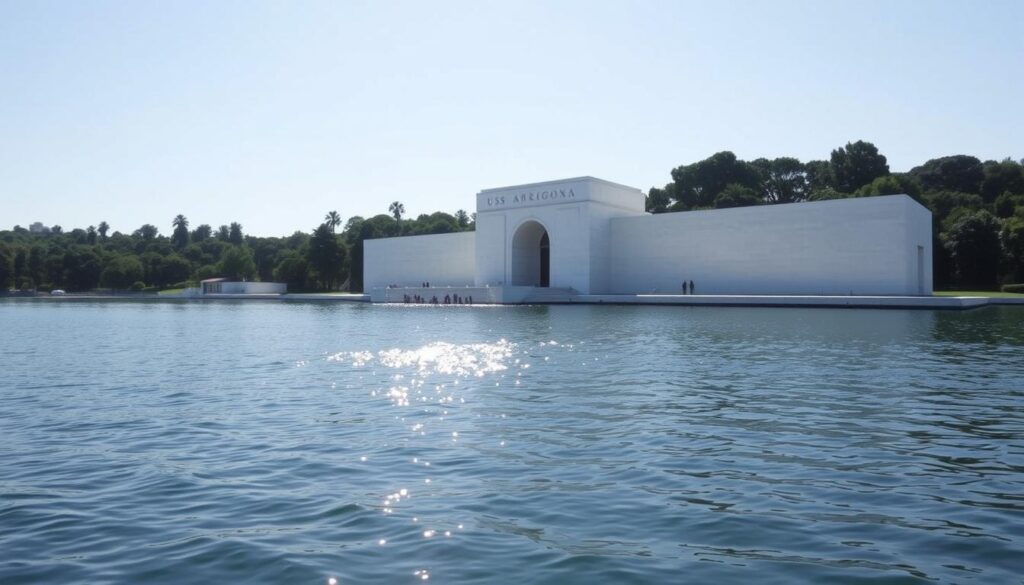
The Pearl Harbor National Memorial serves as a poignant reminder of the surprise attack by Japan on December 7, 1941. This attack drew the United States into World War II. Visitors can honor the 1,177 crewmen who lost their lives aboard the USS Arizona at the memorial built over its wreckage.
The Pearl Harbor Visitor Center is a treasure trove of information. It houses over 120 books, 50 videos, posters, audio recordings, and other memorabilia. These resources delve into the Pacific War and the events at Pearl Harbor. A 23-minute documentary vividly recounts the day’s events, offering a powerful experience for all who visit.
The Ford Island Bus Tour offers guided tours to key sites like the USS Oklahoma and USS Utah Memorials. Expert guides share the stories of bravery and sacrifice. The Remembrance Circle is a heartfelt tribute to those who lost their lives on December 7, 1941. It highlights the names of Medal of Honor recipients for their extraordinary courage.
The outdoor exhibit at Pearl Harbor features interpretive wayside exhibits. These exhibits align historical photos from 1941 with today’s Pearl Harbor panorama. This provides a visual connection to the events of that day. Visiting Pearl Harbor National Park is described as an incredible experience. It offers a well-rounded educational journey, serving as a solemn reminder of the sacrifices made and the pivotal role the islands played in World War II.
National Parks Preserving Volcanic Wonders
Hawaii’s national parks, like Hawaii Volcanoes National Park, safeguard the islands’ iconic volcanic landscapes. These parks, nestled in the lush Hawaiian archipelago, offer a unique chance to explore and appreciate the geological wonders that have shaped these islands over millions of years.
Hawaii Volcanoes National Park
At the heart of Hawaii’s volcanic marvels lies Hawaii Volcanoes National Park, a UNESCO World Heritage Site. It showcases the power and beauty of two of the world’s most active volcanoes: Kilauea and Mauna Loa. This park provides a captivating window into the dynamic geological forces that have forged the Hawaiian Islands.
Visitors to Hawaii Volcanoes National Park can embark on a journey through diverse landscapes. They can explore hiking trails that wind through rainforests, past ancient lava flows, and to the edge of active volcanic vents. Along the way, they can learn about the rich cultural heritage and traditions of the native Hawaiian people, who have revered these landscapes for centuries.
Whether marveling at lava’s glow at night, witnessing Kilauea’s eruptions, or hiking through otherworldly terrain, a visit to Hawaii Volcanoes National Park is awe-inspiring. This national park stands as a testament to the enduring power and ever-changing nature of our planet. It offers visitors a window into the geological forces that have shaped the Hawaiian Islands over millennia.
Iconic Structures Defining Hawaii’s Skyline
Hawaii boasts a range of iconic structures that have become emblematic of its skyline and cultural essence. The Aloha Tower, once a guiding light for ships, now serves as a vibrant marketplace. It welcomes visitors with its unique architectural style. The Tantalus Lookout, perched high above Honolulu, provides stunning views of the city and its natural surroundings. It offers a breathtaking perspective for both tourists and locals.
The Polynesian Cultural Center is a cornerstone of Hawaii’s cultural heritage. It offers an immersive experience into the traditions of Polynesia. Visitors can engage with the diverse customs and crafts of the Pacific, deepening their appreciation for Hawaii’s history and identity. The Dole Plantation also celebrates Hawaii’s pineapple-growing legacy, highlighting the agricultural heritage that has shaped the islands’ economy and landscape.
These landmarks are not just captivating for visitors; they also play a crucial role in preserving and sharing Hawaii’s unique culture and traditions. From the historic Aloha Tower to the Polynesian Cultural Center, these structures are essential to Hawaii’s identity. They define the skyline and offer a glimpse into the extraordinary heritage of the islands.

Scott Sweeney is the creator of Virtual Hawaii 360. Scott is a professional marketer and a lifelong Hawaii enthusiast. Scott splits time between Oahu and Dayton, Ohio. In addition to his marketing endevours, he is also a published Ukulele musician.

